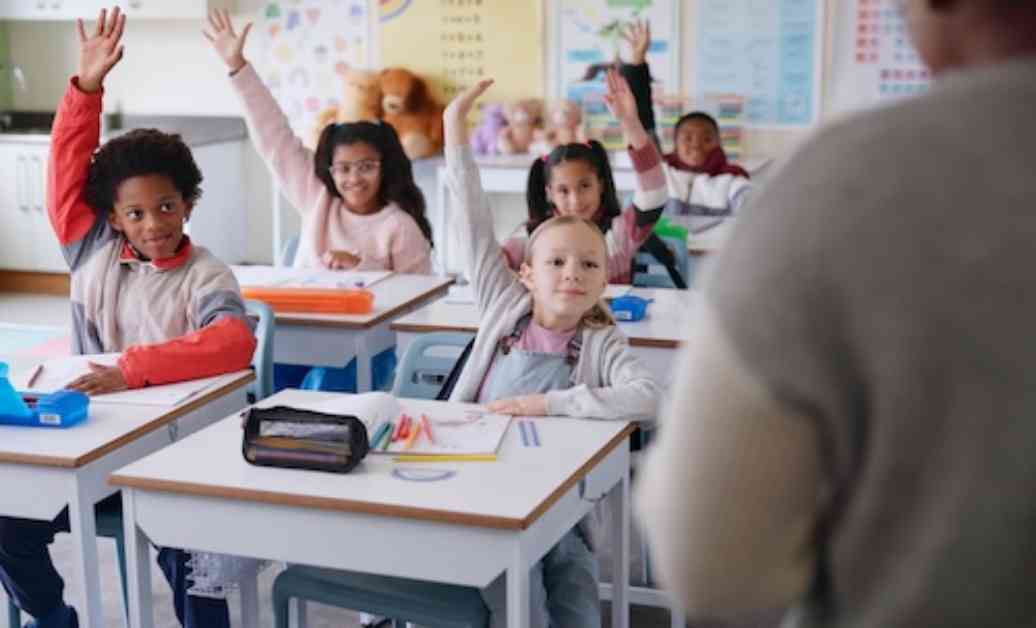K-12 Education in 2025: Navigating Challenges with Empathy and Innovation
Each passing year brings new developments and challenges in the field of K-12 education. From the rise of homeschooling to the impact of parental choice, coupled with technological advancements like AI and VR, the landscape of education continues to shift. Amidst these changes, students’ needs have become increasingly complex, encompassing mental health struggles, learning disparities, and a changing post-graduation environment. This calls for a renewed emphasis on empathy and innovation in education to ensure students not only succeed academically but also thrive emotionally in the face of uncertainty.
As we approach the year 2025, educators are tasked with navigating these uncertainties and must adopt flexible approaches that harmonize academic rigor with emotional well-being. This balance is essential to help students learn, grow, and flourish in all aspects of life. As a superintendent overseeing a California online public school, I have witnessed firsthand the transformative impact that proper support and flexibility can have on students and their families.
Empathy: The Key to Student Well-being
One of the critical aspects of supporting students in 2025 is meeting them where they are and fostering empathy in the classroom. With the New Year underway, many students continue to grapple with mental health challenges, exacerbated by external factors such as political discourse. Reports indicate that 93 percent of school health workers have observed a rise in student anxiety since 2019, highlighting the pressing need for adequate mental health services within schools. As educators, it is our duty to create a safe and nurturing environment for students, striking a delicate balance between academic excellence and self-care, particularly for those facing learning obstacles.
Empathy remains a cornerstone in addressing the multifaceted needs of students, necessitating the presence of in-school mental health counselors, social workers, and targeted teacher training programs. By providing the necessary resources and support, schools can play a pivotal role in helping students navigate challenges, build resilience, and thrive academically and emotionally.
Personalized Learning for Diverse Needs
Another crucial aspect of preparing students for the future is personalizing curriculum and support to cater to diverse learning needs. Many students grapple with learning gaps, particularly in subjects like math and sciences. Those with Individualized Education Programs (IEPs) and special learning requirements often require additional support not readily available in traditional classroom settings. Data from the U.S. National Center for Education Statistics reveals that over 60 percent of students with disabilities spend the majority of their school day in general education classrooms, underscoring the need for flexible learning models.
Administrators and curriculum developers should explore tailored learning environments, including online, blended, or hybrid approaches, to accommodate various learning styles. By offering parents options to select the most suitable learning environment for their children, schools can ensure that all students receive the support and resources they need to succeed academically.
Real-World Skills for Future Success
In light of the declining college enrollment rates among recent U.S. high school graduates, it is imperative to equip students with real-world skills that transcend traditional academic knowledge. Regardless of whether students pursue higher education, vocational training, or immediate entry into the workforce post-graduation, preparing them with practical skills is essential. Engaging students in a curriculum that addresses real-world issues not only makes learning more meaningful but also fosters personal growth and community engagement.
As we look ahead to 2025, we can anticipate more school counselors guiding students through diverse career pathways, including workforce entry, higher education, or skills-based training programs. Additionally, schools may introduce extracurricular activities that offer hands-on training opportunities, preparing students for the demands of the real world and enhancing their overall readiness for future endeavors.
In conclusion, navigating the complexities of K-12 education in 2025 requires a multifaceted approach that prioritizes empathy, flexibility, and innovation. By embracing these principles and adapting to the evolving needs of students, educators can create a supportive and enriching learning environment that empowers students to thrive academically and emotionally. As we embark on this educational journey, let us remember that every student is unique and deserving of personalized support to unlock their full potential and succeed in a rapidly changing world.

